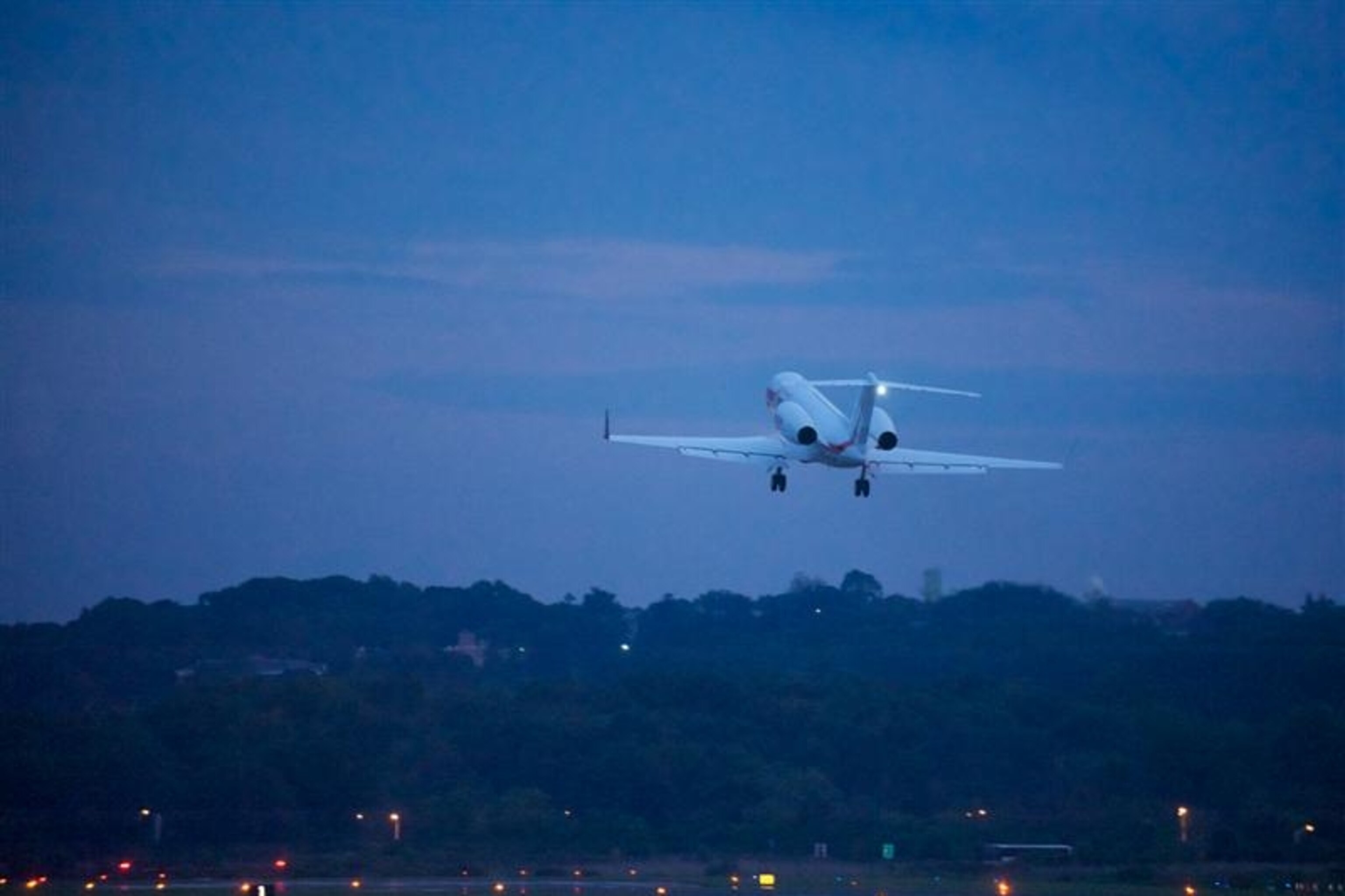First Biofuel Flight Across the Atlantic Seeks to Promote an Aviation Energy Alternative

Perhaps there wasn’t the same fanfare that greeted the Spirit of St. Louis in 1927, but a corporate jet today completed a trans-Atlantic flight that is an important first in the effort to reduce aviation’s dependence on petroleum.
A Honeywell-operated Gulfstream G450 that took off Friday night from an airfield in Morristown, New Jersey and landed seven hours later in Paris became the first aircraft to fly from North America to Europe on a 50-50 blend of biofuel and petroleum-based jet fuel. The flight comes on the eve of the aviation industry’s huge Paris Air Show, and just after Hydrotreated Renewable Jet Fuel (HRJ) received its much-awaited initial certification from the standards-setting body, ASTM International.
(Related: “As Jet Fuel Prices Soar, A Green Option Nears the Runway“)
Honeywell, which is a leading licenser of the HRJ technology, noted that the jet closely followed the route taken by Charles Lindbergh’s famous first solo flight across the Atlantic, seeking to underscore the historical import of the flight.
HRJ can be made from many different feedstocks–and debate is certainly ahead on which choice is most environmentally friendly, and whether the indirect land use impacts are cause for concern. The biofuel in this flight was derived from the oily seeds of the camelina, a relative of the mustard plant that is grown in rotation with wheat. It was grown and harvested by Sustainable Oils, a U.S.-based producer of camelina-based technology; its technology also has been tested by the U.S.Department of Defense.
(Related: “First Green Supersonic Jet to Launch on Earth Day“)
“We’ve made no changes to the engine or the aircraft,” to accomodate the fuel, said Ron Weight, Honeywell chief pilot, before entering the cockpit. He said Honeywell aimed to demonstrate with its own fleet that its Green Jet Fuel is “a viable option for passenger travel.”

A number of large air carriers around the world are eyeing the possibility of integrating the new plant-based fuel into their fuel mix. High oil prices have been a drag on the industry this year. Although biofuel at the outset will certainly be expensive, it could be competitively priced if production ramps up quickly enough. And in Europe, regulations that will force aviation to reduce carbon emissions are looming. According to Honeywell, the trans-Atlantic biofuel flight saved about 5.5 metric tons of net carbon dioxide emissions compared to a similar petroleum-powered flight.
Related Topics
Go Further
Animals
- This ‘saber-toothed’ salmon wasn’t quite what we thoughtThis ‘saber-toothed’ salmon wasn’t quite what we thought
- Why this rhino-zebra friendship makes perfect senseWhy this rhino-zebra friendship makes perfect sense
- When did bioluminescence evolve? It’s older than we thought.When did bioluminescence evolve? It’s older than we thought.
- Soy, skim … spider. Are any of these technically milk?Soy, skim … spider. Are any of these technically milk?
- This pristine piece of the Amazon shows nature’s resilienceThis pristine piece of the Amazon shows nature’s resilience
Environment
- This pristine piece of the Amazon shows nature’s resilienceThis pristine piece of the Amazon shows nature’s resilience
- Listen to 30 years of climate change transformed into haunting musicListen to 30 years of climate change transformed into haunting music
- This ancient society tried to stop El Niño—with child sacrificeThis ancient society tried to stop El Niño—with child sacrifice
- U.S. plans to clean its drinking water. What does that mean?U.S. plans to clean its drinking water. What does that mean?
History & Culture
- Meet the original members of the tortured poets departmentMeet the original members of the tortured poets department
- Séances at the White House? Why these first ladies turned to the occultSéances at the White House? Why these first ladies turned to the occult
- Gambling is everywhere now. When is that a problem?Gambling is everywhere now. When is that a problem?
- Beauty is pain—at least it was in 17th-century SpainBeauty is pain—at least it was in 17th-century Spain
- The real spies who inspired ‘The Ministry of Ungentlemanly Warfare’The real spies who inspired ‘The Ministry of Ungentlemanly Warfare’
Science
- Here's how astronomers found one of the rarest phenomenons in spaceHere's how astronomers found one of the rarest phenomenons in space
- Not an extrovert or introvert? There’s a word for that.Not an extrovert or introvert? There’s a word for that.
- NASA has a plan to clean up space junk—but is going green enough?NASA has a plan to clean up space junk—but is going green enough?
- Soy, skim … spider. Are any of these technically milk?Soy, skim … spider. Are any of these technically milk?
- Can aspirin help protect against colorectal cancers?Can aspirin help protect against colorectal cancers?
Travel
- What it's like to hike the Camino del Mayab in MexicoWhat it's like to hike the Camino del Mayab in Mexico
- Is this small English town Yorkshire's culinary capital?Is this small English town Yorkshire's culinary capital?
- This chef is taking Indian cuisine in a bold new directionThis chef is taking Indian cuisine in a bold new direction
- Follow in the footsteps of Robin Hood in Sherwood ForestFollow in the footsteps of Robin Hood in Sherwood Forest